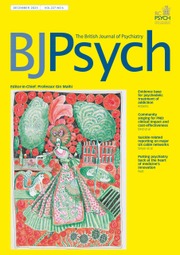Hugh Diamond's mid-19th-century photograph depicts a woman in stages of recovery from ‘puerperal insanity’, a disorder lying at the intersection of obstetrics and psychiatry. First conceptualised by obstetrician Robert Gooch in 1820, this disorder was fraught with cultural stereotypes, characterised by behaviours that violated the Victorian idea of ‘feminine purity’ (i.e. foul language, unkempt appearance, indecent exposure) and the expectation that women should fulfil their role as caretakers. Figure 1 illustrates the woman's clinical improvement correlating with changes in her attire and grooming to better conform to cultural expectations. This series reveals power dynamics infused in the physician–patient relationship and the stigmatisation of female maladies.

Fig. 1 Reproduced engraving. Medical Times Gazette, ‘puerperal mania in four stages’. Wellcome collection. Public domain mark.
Data availability
Data availability is not applicable to this article as no new data were created or analysed in this study.
Acknowledgements
We would like to thank Dr. Peter Bernstein and Dr. Peter Buckley for reading an early draft of this manuscript and providing feedback.
Author contributions
S.R.W.: conceptualisation, investigation, writing, reviewing, editing. M.J.M.: writing, revision, reviewing, editing.
Funding
This research received no specific grant from any funding agency, commercial or not-for-profit sectors.
Declaration of interest
None.





eLetters
No eLetters have been published for this article.